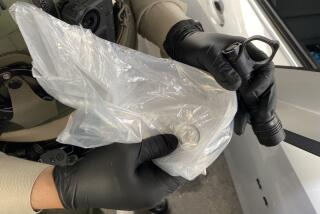Here’s how to check your computer for the DNS Changer Malware
As many as 64,000 Americans’ computers may still be affected by malware that will cause them to lose Internet service come Monday, so if you haven’t already, make sure you aren’t among them.
There’s various ways to test your computer for the DNS Changer Malware, and we’ve included a few in this post. But remember, this applies only to Windows users, so if your computer has an apple logo with a bite taken out of it, you’re fine.
If you want to go the most official route possible, head to the FBI’s site. With the FBI, you know you’re dealing with the most trusted source on this matter -- it’s the agency that caught the people who began this whole madness -- but its method of checking is also a bit time consuming.
If you want something simpler, you can also check your computer at www.dns-ok.us/. The FBI actually links to this site as well, so you know it’s trustworthy too. If your computer is clean, you’ll get a big green image, and if it’s not, you’ll get a red screen. The only issue with that site is that sometimes it doesn’t work. I’ve tried it three times on two computers, but it worked only once.
If you need to try another site, McAfee has set up this site too. It seems to work, and it’s simple. If you’re all clear, McAfee will even congratulate you.
Qualys also has a checker set up. You can head over there, and it’ll check for the DNS Changer Malware and any other issues you may want to get fixed on your computer.
You can also follow the links on this page for instructions on how to check your computer on your own for the malware. Scroll down for the links.
Google and Facebook have also been notifying users if their computers are infected, so if you haven’t logged on to either site in a while, that may be a quick, simple but certain way of checking for the malware.
If you are affected, fixing the issue could take a little bit of time.
Stan Stahl, president of the Los Angeles chapter of the Information Systems Security Assn., in a note said affected users should back up their important data, reformat their hard drive and reinstall the operating system and applications afterward.
Also, if your computer was affected, make sure to call your Internet provider and have it help you get your DNS changed. And if your computer has been infected, the smartest thing to do is change the passwords for all your websites and applications. This can take an hour or two out of your life, but changing your passwords from time to time is a recommended thing to do anyway.
So make sure to check your computer and make sure your friends and loved ones do too. As PC World points out, if you don’t check your computer and can’t get on Facebook on Monday, you can only blame yourself.
If you want more information about the history of the DNS Changer Malware and what you can do about it, check out the video below.
ALSO:
Apple removes malware app that made its way into App Store
Malware may knock 64,000 Americans off Internet on Monday
Windows users: Don’t get disconnected from the Web on July 9
Follow Salvador Rodriguez on Facebook, Twitter or Google+
More to Read
Inside the business of entertainment
The Wide Shot brings you news, analysis and insights on everything from streaming wars to production — and what it all means for the future.
You may occasionally receive promotional content from the Los Angeles Times.











